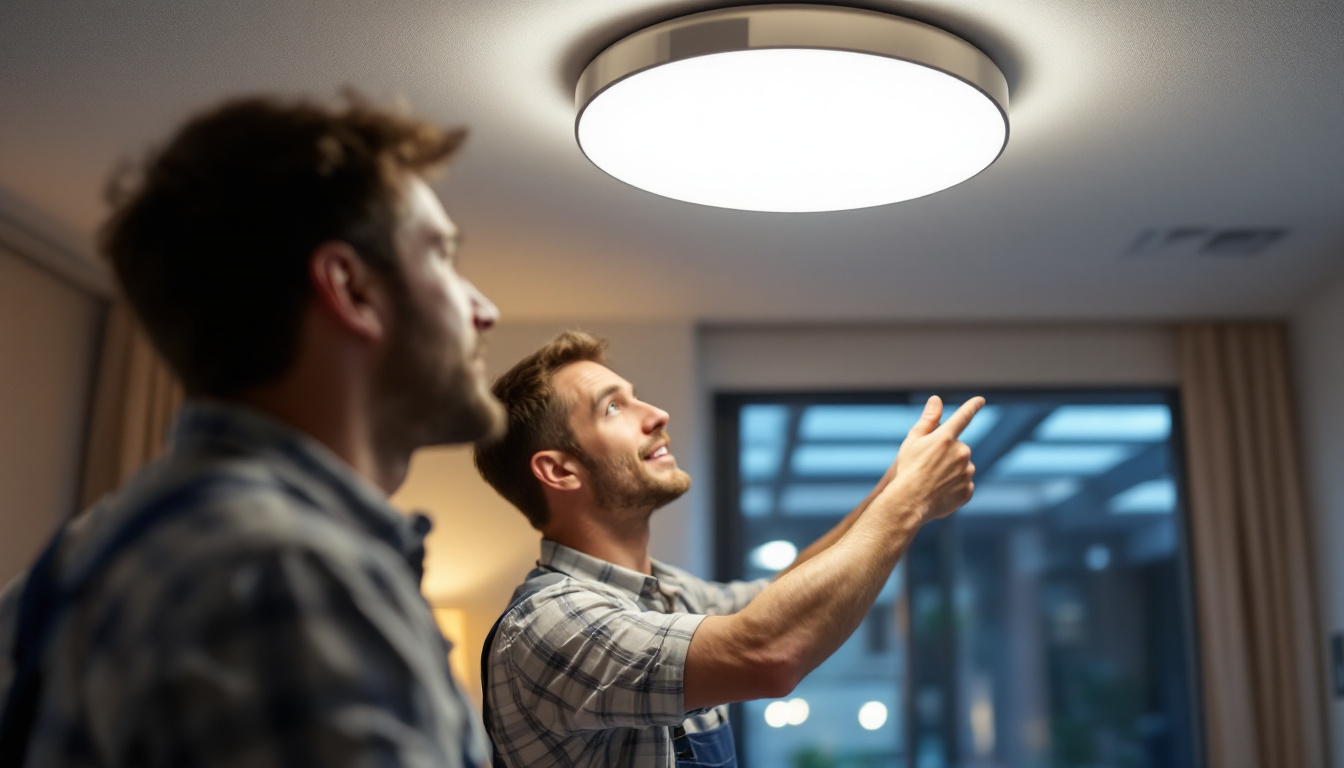
Lighting plays a pivotal role in enhancing the aesthetics and functionality of outdoor spaces. For lighting contractors, the evolution of outdoor home lighting fixtures has not only transformed the way they approach projects but has also opened up new opportunities for creativity and efficiency. This article delves into the latest trends, technologies, and best practices in outdoor lighting, providing insights that can help contractors elevate their work and exceed client expectations.
Outdoor lighting serves multiple purposes, from enhancing security to creating inviting atmospheres for social gatherings. It allows homeowners to enjoy their outdoor spaces long after the sun sets, adding both beauty and practicality to gardens, patios, and walkways. The right lighting can transform a mundane backyard into a magical retreat, encouraging families to spend more time outdoors and fostering connections with neighbors and friends.
Moreover, well-designed outdoor lighting can significantly increase property value. Homeowners are increasingly aware of the benefits of investing in quality lighting solutions, making it essential for contractors to stay informed about the latest products and trends in the market. Innovative technologies such as smart lighting systems, which can be controlled remotely via smartphone apps, are becoming more popular, allowing homeowners to customize their outdoor ambiance with ease.
One of the primary functions of outdoor lighting is to enhance safety and security. Properly illuminated pathways, driveways, and entrances deter potential intruders and reduce the risk of accidents. Lighting contractors must consider the placement and type of fixtures that provide adequate illumination without causing glare or light pollution. Additionally, using solar-powered lights can be an eco-friendly option, providing illumination without the need for electrical wiring, making them ideal for remote areas of a property.
Motion-sensor lights have gained popularity as an effective security measure. These fixtures activate when movement is detected, providing an added layer of security while conserving energy. Contractors should be familiar with various sensor technologies to recommend the best solutions for their clients. Furthermore, integrating smart home technology can enhance these systems, allowing homeowners to receive alerts on their devices when motion is detected, thus providing peace of mind whether they are home or away.
Beyond functionality, outdoor lighting plays a crucial role in enhancing the aesthetic appeal of a property. Creative lighting designs can highlight architectural features, illuminate landscaping, and create focal points that draw the eye. For contractors, understanding the interplay between light and shadow is essential in crafting visually stunning outdoor environments. The use of color in lighting can also add a unique touch, allowing homeowners to express their personal style and create themed outdoor spaces for special occasions.
Using a combination of ambient, task, and accent lighting can create dynamic outdoor spaces. For instance, soft ambient lighting can set a relaxing mood, while task lighting is essential for functional areas like grilling stations or outdoor kitchens. Accent lighting can be employed to showcase specific plants or sculptures, adding depth and interest to the overall design. Seasonal lighting, such as string lights or lanterns, can further enhance the atmosphere, making outdoor areas feel festive and inviting, perfect for gatherings or quiet evenings under the stars.
The landscape of outdoor lighting is continuously evolving, with new technologies emerging that enhance efficiency and versatility. Lighting contractors must stay abreast of these innovations to provide the best solutions to their clients.
LED lighting has revolutionized the outdoor lighting industry. Known for their energy efficiency and longevity, LED fixtures consume significantly less power than traditional incandescent bulbs. This not only reduces energy costs for homeowners but also minimizes maintenance needs due to their extended lifespan.
Moreover, LEDs are available in various color temperatures and styles, allowing contractors to customize lighting solutions to fit the specific needs and preferences of their clients. The ability to create warm, inviting spaces or cool, modern looks with LED technology is a game-changer for outdoor lighting design. Additionally, many LED fixtures are designed to withstand harsh weather conditions, making them ideal for outdoor environments. This durability ensures that clients can enjoy their lighting designs year-round without the worry of frequent replacements or repairs.
Smart lighting systems have gained traction in recent years, offering homeowners greater control over their outdoor lighting. These systems can be programmed and controlled via smartphones or smart home devices, allowing users to adjust brightness, color, and timing with ease.
For lighting contractors, integrating smart technology into outdoor lighting installations can enhance the overall value of their services. Offering clients the option to control their lighting remotely or set schedules for automated lighting can significantly improve their outdoor experience. Furthermore, many smart lighting solutions come equipped with motion sensors and security features, providing an added layer of safety for homeowners. This integration not only promotes energy efficiency by ensuring lights are only on when needed but also enhances the aesthetic appeal of outdoor spaces, as homeowners can create dynamic lighting scenarios for different occasions, from intimate gatherings to festive celebrations.
When it comes to outdoor lighting, design considerations are paramount. Lighting contractors must take into account various factors to create effective and aesthetically pleasing installations.
The selection of fixtures is crucial in outdoor lighting design. Contractors should consider the style of the home and the surrounding landscape when choosing fixtures. Whether opting for sleek modern designs or classic lantern styles, the fixtures should complement the overall aesthetic of the property.
Additionally, durability is a key factor. Outdoor fixtures must withstand various weather conditions, including rain, snow, and extreme temperatures. Selecting high-quality materials that resist corrosion and fading ensures that the lighting will remain functional and attractive for years to come. Energy efficiency is another important consideration; using LED fixtures not only reduces energy consumption but also minimizes the frequency of bulb replacements, making them a practical choice for long-term use.
Strategic placement of lighting fixtures can greatly influence the effectiveness of the design. Contractors should consider the intended use of each outdoor space when determining where to position lights. For example, pathway lights should be spaced evenly to provide consistent illumination, while accent lights should be positioned to highlight specific features.
Layering different types of lighting can also enhance the overall effect. By combining ambient, task, and accent lighting, contractors can create a well-balanced design that meets both functional and aesthetic needs. Furthermore, incorporating smart lighting technology allows for greater control over the outdoor environment; homeowners can adjust brightness levels or set timers for their lights, enhancing both security and convenience. This innovative approach not only elevates the visual appeal of the outdoor space but also contributes to energy savings and sustainability efforts.
As awareness of environmental issues grows, lighting contractors are increasingly tasked with creating sustainable outdoor lighting solutions. This involves not only selecting energy-efficient fixtures but also considering the impact of light on local ecosystems.
Light pollution is a growing concern in urban and suburban areas, affecting both wildlife and human health. Contractors should be mindful of how their lighting designs can contribute to or mitigate light pollution. Using fixtures that direct light downward and minimize glare can help reduce the spread of artificial light into the night sky.
Additionally, incorporating timers and sensors can further reduce energy consumption and limit unnecessary lighting during off-peak hours. Educating clients about the importance of responsible outdoor lighting can also foster a greater appreciation for sustainable practices.
Incorporating eco-friendly materials into outdoor lighting installations is another way contractors can contribute to sustainability. Options such as recycled metals and sustainably sourced wood can enhance the environmental credentials of a lighting project.
Moreover, selecting fixtures that are designed for easy disassembly and recycling at the end of their life cycle can further minimize environmental impact. Contractors should stay informed about the latest eco-friendly materials and practices to offer clients sustainable solutions.
Educating clients about outdoor lighting options is a vital part of a contractor’s role. By engaging clients in the design process and explaining the benefits of various lighting solutions, contractors can build trust and ensure satisfaction with the final result.
During the initial consultation, contractors should take the time to understand the client’s vision, preferences, and lifestyle. This information is essential for creating a tailored lighting design that meets their specific needs.
Providing clients with visual aids, such as sketches or digital renderings, can help them visualize the proposed lighting design. This collaborative approach not only enhances client satisfaction but also fosters a sense of ownership in the project.
Once the outdoor lighting installation is complete, educating clients on maintenance and care is crucial. Providing clear instructions on how to clean fixtures, replace bulbs, and troubleshoot common issues can empower homeowners to take care of their lighting systems effectively.
Contractors can also offer maintenance services as part of their offerings, ensuring that clients’ outdoor lighting remains in optimal condition over time. This not only enhances the client’s experience but also creates opportunities for ongoing business.
The landscape of outdoor home lighting fixtures is continually evolving, presenting lighting contractors with exciting opportunities to enhance their work. By staying informed about the latest technologies, design trends, and environmental considerations, contractors can offer innovative and sustainable solutions that meet the needs of modern homeowners.
As outdoor lighting becomes increasingly integral to enhancing safety, security, and aesthetics, the role of lighting contractors will only grow in importance. Embracing these changes and adapting to the evolving market will ensure that contractors remain competitive and successful in their field.
Ready to elevate your outdoor lighting projects with the latest trends and technologies? At LumenWholesale, we provide lighting contractors like you with the highest quality, spec-grade lighting products at unbeatable wholesale prices. Say goodbye to local distributor markups and hello to a vast selection of reliable, high-performance lighting that meets the most rigorous industry standards. With the added benefits of free shipping and bulk buying convenience, LumenWholesale is your go-to source for premium lighting solutions that blend quality, affordability, and ease. Don’t compromise on your lighting needs—discover the best value in wholesale lighting by visiting Wholesale Lighting at the Best Value today.

Discover the ultimate guide to bulk light fixtures with our essential checklist tailored for lighting professionals.

Discover the benefits and applications of 400 Watt LED High Bay Lights tailored for lighting contractors.

Discover the pitfalls of purchasing outdoor house lights in bulk from local distributors.

Discover essential insights into LED ceiling lights that every lighting contractor should know.
Get notified when NEW deals are released.
Optimize your budget with wholesale discounts.
Only top-quality, specification-grade lighting products.
No additional costs at checkout - what you see is what you pay.
We understand the unique needs of contractors.